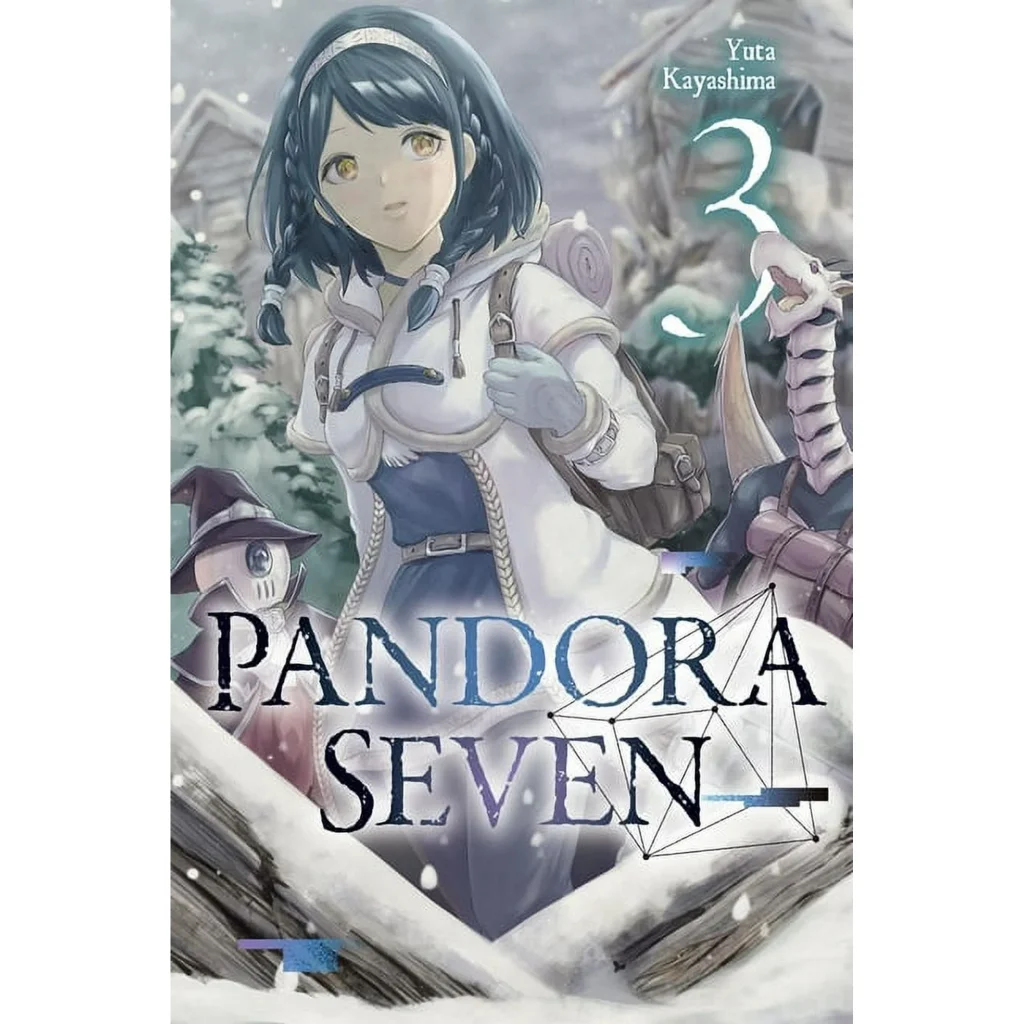Pandora Seven Vol. 3 deepens the scope of the story, sending Lia Frontier into the mysterious and foreboding region known as the Great Shrine of Necromanie. Once a hallowed place of reverence, the shrine has now become a cursed land, avoided and feared after the rise of Humania. But for Lia, whose destiny is tied to uncovering the truths of Pandora’s Box, the lure of the shrine’s hidden knowledge is too powerful to ignore. This volume captures her evolution as she steps further into a world shaped by myths, politics, and forgotten history.
The worldbuilding in this volume is exceptional. The Great Shrine of Necromanie is introduced with rich, haunting visuals that make it feel like a character in its own right. Its eerie stillness, cracked pillars, and long-forgotten halls evoke a sense of sacred decay. The shrine is more than just a setting—it’s a symbol of how history, truth, and fear intertwine. Kayashima takes time to explore this place slowly, allowing the mystery and myth surrounding it to simmer beneath every conversation and encounter.
Lia’s character development remains one of the strongest elements of the series. In Vol. 3, we see her wrestling with her purpose, driven not just by curiosity but also by a deep need to understand the world that labels her kind as a threat. Her resilience shines in this volume, especially as she navigates the growing tension between the people she meets and the truths they fear. Despite the risks, she charges forward, fueled by both defiance and hope. This volume is less about combat and more about confronting history—and it handles that shift beautifully.
New characters are introduced, adding new layers to the narrative. These companions, each from different backgrounds and species, offer fresh perspectives on humanity and coexistence. Their interactions with Lia are heartfelt, often revealing prejudices, misunderstandings, and unexpected alliances. There’s a consistent message threaded throughout these exchanges: understanding comes from dialogue and shared struggle, not dominance or control. It’s a quiet but powerful theme that adds emotional weight to the story.
The art in this volume continues to shine. The visual design of the shrine is mesmerizing—gothic, decaying, yet oddly tranquil. The contrast between its broken grandeur and Lia’s determination makes every scene more immersive. The character expressions are detailed and nuanced, especially during moments of doubt, realization, and emotional vulnerability. Kayashima’s work strikes that rare balance between nostalgic, old-school sci-fi aesthetics and a modern sense of pacing and panel design.
While the pacing in Vol. 3 is a touch slower than previous volumes, it’s clear that this was an intentional choice to allow room for atmosphere and reflection. This approach pays off, especially in scenes where characters confront their pasts or begin to piece together the greater mystery of Pandora’s Box. It’s a volume that invites you to linger—to think about what’s said, what’s left unsaid, and how the past continues to echo in the present.
Perhaps what makes this volume particularly strong is its balance of philosophy and story. Themes of identity, legacy, and truth ripple through every scene, but they never overpower the narrative. Instead, they ground it. Lia’s journey becomes more than just a personal mission—it becomes a lens through which readers examine power, prejudice, and the desire to connect across divides.
I absolutely loved this volume and can’t wait to see how the series continues. Pandora Seven Vol. 3 expands the world in meaningful ways, deepens its characters, and leaves readers hungry for the next revelation. Yuta Kayashima continues to surprise me with his subtle worldbuilding and strong emotional storytelling. If this momentum continues, the series is well on its way to becoming a standout in the realm of sci-fi fantasy manga.



